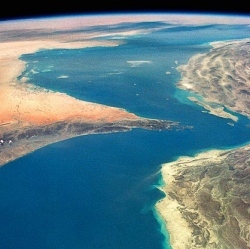
Reaching 90% of the world’s people with wireless service by 2030, up from 32% now, would produce economic gains of $17 for every $1 spent, according to the Copenhagen Consensus latest study. That’s below the $21 in benefits from a building out fixed broadband networks.
* this could provide over $22 trillion of GDP growth by 2030 ($2.2 trillion per year by getting to lifting developing world to the developed world 75% internet access)
* 160 million people could be lifted from poverty and 120 million jobs could be provided
Google internet balloons, drones and satellites could be the means to accelerate mobile internet deployment to the developing world. Facebook is also working on internet drones.
Deloitte estimates that extending internet access in developing economies to the level seen in developed countries can raise living standards and incomes by up to $600 per person a year, thus lifting 160 million people out of extreme poverty in the regions covered by this study.
The internet provides a route through which to improve awareness of diseases and provide information on health treatments. A number of free mobile-based and web-based applications exist in developing countries that provide information related to nutrition, hygiene and prevention of common illnesses.
Evidence on the link between health literacy and mortality rates suggests that access to the internet has the potential to save nearly 2.5 million lives across the regions covered by this study, if they were to achieve the level of internet penetration seen in developed economies.
In particular, Deloitte estimates that improved health information to expecting mothers and health workers could lead to a reduction of child mortality, saving 250,000 children who may otherwise have died during their first year of life.
If developing countries were to catch up with levels of internet access in developed economies today, they would reach a penetration level of around 75%, more than tripling the number of internet users from 800 million to 3 billion. This means that an additional 2.2 billion people would receive internet access; of these, 700 million would be in Africa, 200 million in Latin America and 1.3 billion in the Asian regions.
Deloitte estimates that increasing internet access to levels experienced in developed countries can increase the GDP of the regions considered by up to $2.2 trillion (an increase of 15%), with South and East Asia and India each gaining about $0.6 trillion in additional economic activity. Over ten years from 2020 to 2030 this would be a $22 trillion boost to GDP.
Output in Africa could increase by over $0.5 trillion. Across the developing world, this represents an increase in the GDP growth rate of over 72%: in India GDP growth rates have the potential to double, in Africa to grow by 92% and in South and East Asia to rise by 75%. These differences are based on GDP forecasts for the next years obtained from the IMF.
They further highlight the potential impacts of internet access as a catalyst for economic growth, especially for regions, such as India, which are forecast to grow at a slower pace in the next years.
